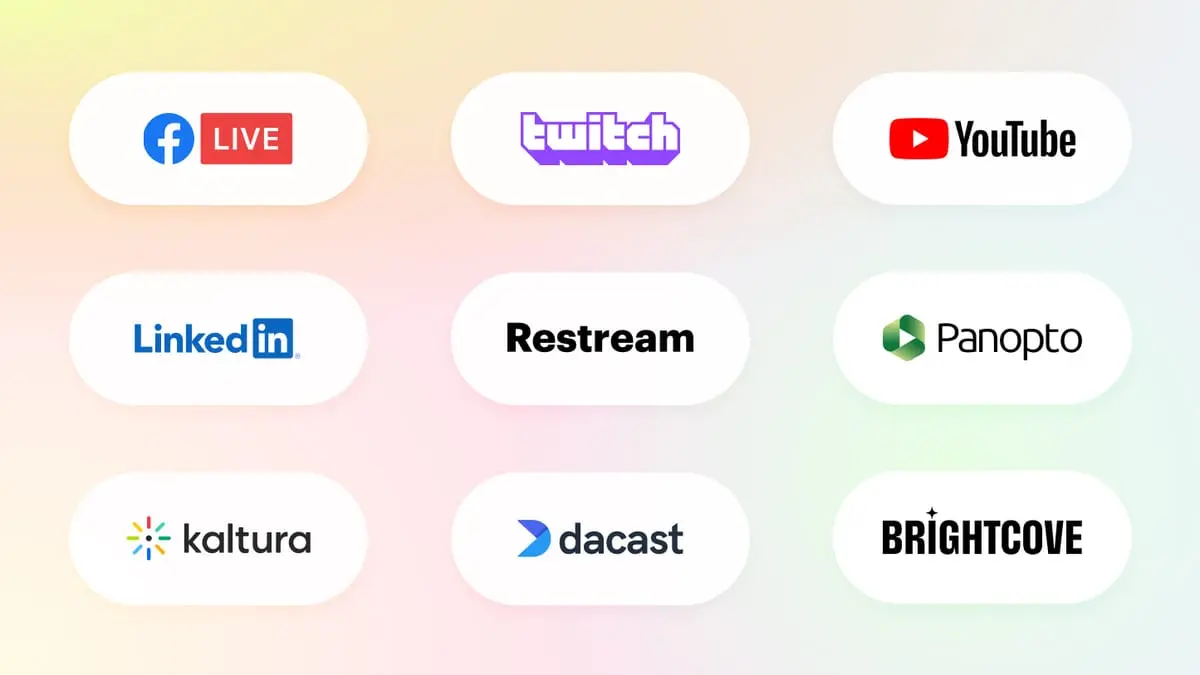Latest In Voice Tech

Imagine technology being as attentive as a personal assistant, understanding your commands not by taps or clicks, but simply through your spoken words. Welcome to the realm of the latest advancements in voice tech, a rapidly evolving sector that is significantly changing the dynamics of human-machine interaction.
Dating back to the invention of speech recognition systems like IBM’s Shoebox in the early 1960s, voice tech has come a long way. Recent PwC research shows around 90 million U.S. consumers now use voice assistants every month. This apex of vocal communication with AI isn’t merely trend-setting, but a strategic step towards creating a seamless, hands-free digital ecosystem.
Recent advancements in speech technology showcase more accurate and responsive speech recognition systems. Innovations like AI voice assistants with Natural Language Processing, improved speech-to-text translation, and a rise in voice commerce applications have transformed how we interact with technology.

Embracing the New Era of Voice Assistant Technology
Technology has continually evolved to make our lives easier. One of the latest advancements gaining momentum in our day-to-day digital interactions is voice technology. The soft, interactive voice assistants have not only found a place in our portable devices like smartphones and speakers but also built a home in many industries, emerging as powerful tools to drive business growth. Let’s delve into some of the breakthroughs in the ‘Latest in Voice Tech’.
Enhanced Multimodality in Conversational AI
Combining voice and visual capabilities has extended the usability of voice assistants beyond traditional domains. Users are no longer restricted to communicating with their devices using just their voice. Enhanced multimodality means voice assistants can now process and respond to visual cues alongside voice instructions, offering a complete interaction experience. This integration has opened a whole new world of possibilities, from smart home applications to sophisticated business operations.
Interactive voice response (IVR) systems have been progressively replaced by multimodal conversational AI platforms. These platforms offer customer experiences that are more in tune with the interactive and visual nature of humans. Consequently, there’s growing importance to design voice-first experiences tailored to serve visual interaction as well.
For instance, incorporating voice-activated controls into smartphone apps provides users with seamless multimodal experiences, merging the spoken commands and screen interactions. It also enables more personalized experiences, dynamic content generation, and easy navigation.
Large corporations have started integrating these advanced features into their customer relationship management process. This shift in engaging customers could revolutionize customer service, making it ultra-responsive to user needs.
Voice Biometrics for Enhanced Security
Another significant advancement in the ‘Latest in Voice Tech’ is the implementation of voice biometrics for security purposes. As voice assistants are becoming central to controlling various devices and systems, the need for a robust security framework to ensure secure interactions becomes critical.
Voice biometrics uses unique voice characteristics to verify a user’s identity during vocal interactions. This string-based approach includes metrics like pitch, speed, rhythm, and tone to generate an individual’s voiceprint. It serves as a new level of access control, improving the user authentication process and deterring potential security breaches.
This technology is widely used in banking and finance applications, offering a convenient, hands-free security measure that enhances user experience while reducing fraud risks. The application is also being explored in other domains such as healthcare and retail, showing promising potential to secure patient data and customer transactions respectively.
While there are potential privacy considerations around voice biometrics, the improved security and convenience are notable benefits that can’t be overlooked. Hence, it’s evident that applications of voice biometrics will only grow with time.
Redefining Customer Interactions with Speech Analytics
Speech analytics is a fast-rising trend in the voice tech industry. This technology converts voice data into readable transcripts and interprets sentiments, emotions and tones to determine the customer satisfaction level. It’s an invaluable tool for companies to understand their customers better, providing insightful data to improve services and offerings.
Derived data can help in assessing agent performance, identifying root causes of customer dissatisfaction, and understanding emerging trends. This analysis is an asset for companies allowing them to strategize their future roadmaps effectively.
Speech analytics can be implemented across various sectors, including marketing, support, product development, and human resources. It’s forecasted that the technology will have a wider scope in the future as organizations are investing in real-time and predictive speech analytics for a more proactive approach to improving customer interactions.
The Future: Next-gen Voice Assistants and Beyond
The evolution of voice technology is a testament to the multifaceted dimension of human interaction. As the technology matures, there’s a significant move towards making assistants more human-like, thus boosting user engagement. Below are some future prospects that are being explored in the ‘Latest in Voice Tech’ to get an idea of what lies ahead.
Natural Language Processing (NLP): Advanced Level Conversations
The use of Natural Language Processing (NLP) in voice tech is transforming the way voice assistants interact with users. NLP allows devices to understand, interpret, and generate human language in a valuable way. Its potential evolves conversational AI to create a more natural and interactive user experience.
In the coming years, we could see voice assistants with an enhanced understanding of context, emotion, and subtlety. This level of sophistication could enable these systems to understand and respond appropriately to intricate and complex voice commands. High-functioning AI chatbots could then not only respond to common queries but initiate conversations, upsell products and provide customer service in a more empathetic and intuitive way.
With advancements in NLP, voice tech could do more than merely follow commands. The ongoing research aims to encompass emotional intelligence to make voice interactions more engaging, fulfilling, and productive. Companies like Google, Amazon, and Apple are already on their way to create a more intuitive, emotionally competent voice assistant.
Embracing the potential of NLP can lead to a transformative shift in the functionality of voice assistants. The direction of this shift and the rate at which NLP is advancing, artificial general intelligence is not all talk but a reality.
3D Sound for Immersive Experiences
3D sound technology is an emerging trend in the ‘Latest in Voice Tech’ that has the potential to transform the fundamental way we listen to and interact with voice-enabled devices. Also called spatial audio, 3D sound gives the listener an immersive, multi-dimensional auditory experience, adding direction to the sound sources.
This technology has already found a home in our handheld devices, particularly in wearables like AirPods Pro and Oculus Quest, where 3D sound offers a more engaging and immersive listening experience. In the field of voice assistants, 3D sound can make the conversation more lifelike, making it seem like the assistant is present in the room with us.
In future, 3D sound could have wide-ranging applications, from enhancing accessibility for the visually impaired to creating more engaging digital content. It could be a game-changer in industries like gaming, entertainment, and even in healthcare for creating decentralized auditory environments.
It’s undeniable that the advent of voice technology has changed the way we interact with our devices. The latest advancements listed above barely scratch the surface of the plethora of possibilities presented by this technology. As tech giants invest heavily into research and development, voice tech has the potential to reshape our future significantly. All said, the voice technology industry offers enough room for continuous innovation, promising an exciting journey ahead.
Emerging trends in Voice Technology
The industry of voice technology is evolving at a rapid pace, giving rise to innovative solutions and trends. Two main driving forces behind this shift are the increased use of virtual assistants and smart home devices.
Artificial Intelligence (AI) is at the core of this technological revolution. Major tech companies are investing heavily in AI to improve the effectiveness and efficiency of voice recognition systems. These improvements are expected to enable more complex queries, understanding different accents and dialects, and even recognising individual users by their voice. Another rising trend is the integration of voice technology in various sectors such as healthcare, ecommerce and customer service.
- Virtual Assistants: Improved algorithms for better task performance.
- Smart Home Devices: Advanced voice control to operate various appliances.
- AI Improvements: Enhancing voice recognition and processing.
- Integration across sectors: Using voice tech in fields like healthcare, ecommerce and customer service.
Frequently Asked Questions
With advancements in technology, voice tech is undergoing significant changes and improvements. Stay tuned to these Frequently Asked Questions to know the latest in this field.
1. What are the recent breakthroughs in voice tech?
One of the most exciting breakthroughs in voice tech is the development of Natural Language Processing (NLP). This technology allows devices to understand and interpret human speech more accurately. Notably, Google’s model, BERT, is making a considerable difference in the way voice tech understands context and conversation’s nuance.
Also, the voice tech industry is shifting towards a more human-like conversation model. Companies are focusing on developing assistance that can understand user emotions, show empathy, and adapt to the user’s mood. This is part of the evolution of voice tech toward becoming more personalized and interactive.
2. How is AI improving voice tech?
Artificial Intelligence (AI) is at the heart of the recent improvements in voice tech. It is instrumental in understanding user inputs and predicting their needs. AI’s ability to learn from past interactions is gradually leading to a more accurate recognition of speech and languages, making voice tech even more effective.
Furthermore, AI is enhancing the capabilities of voice tech by enabling the processing of multiple languages and dialects. It is also integrating with other technology like IoT devices to help users control their smart homes using voice commands, thus extending the versatility of voice tech.
3. What are the potential future trends in voice tech?
The application of voice tech is expected to extend beyond smart speakers and mobile phones. There are projections that voice tech will penetrate into industries like healthcare, education, and automobile. Voice command in cars, interactive learning through voice tech in education, and voice-activated health tools are some of the emerging trends.
Moreover, unobtrusive voice tech is another future trend. This means voice tech devices will integrate smoothly into everyday life, becoming a seamless part of the user’s routines. Enhanced privacy and improved accuracy of voice recognition software are also predicted to be part of the future of voice tech.
4. What is the impact of voice tech on businesses?
Businesses are increasingly adopting voice tech for various applications to create a better customer experience. For instance, voice-assisted shopping is a growing trend among e-commerce businesses. Besides, companies are using voice tech to improve customer service by integrating it into their call centers to provide quicker, more efficient service.
On the other hand, voice tech is also revolutionizing the way companies conduct internal operations. Applications such as voice-to-text transcription ease administrative tasks, save time, and increase productivity. Voice tech is playing a crucial role in enabling businesses to be more efficient, responsive, and customer-friendly.
5. What are the challenges facing voice tech?
While voice tech holds a useful promise, it also comes with challenges. One of the major ones is accurately understanding different accents, dialects, and languages. Despite improvements, voice tech still struggles in accurately recognizing and understanding multiple languages with various accents.
Also, privacy and security concerns remain an issue. With voice tech integrated into devices capable of making purchases or accessing personal information, there’s a risk of misuse if proper security measures aren’t implemented. These challenges will need to be addressed for voice tech to gain widespread acceptance and use.
JHS Just Changed The Pedal World FOREVER | Voice Tech Review
The crux of the matter is that the field of Voice Tech is evolving rapidly and it’s exciting to see where we’re headed. Recent innovations are pushing boundaries and changing the way we interact with our digital devices, making our interactions smoother and more natural. From smart homes to customer service, Voice Tech is quickly proving its worth.
The continuous development of Voice Tech is a testament to its potential and its crucial role in shaping the future of technological communication. As we further journey into this digital era, we are bound to witness more advancements in this amazing realm that will redefine our interaction with technology. Hence, we need to stay up-to-date and eagerly anticipate what’s next in Voice Tech.






